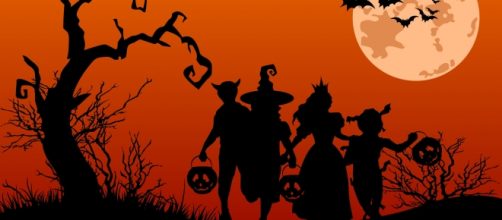Trick or treat! As the time for yet another Halloween night approaches, we look into how and where it all started as a celebration. We are 2,800 years ago, when the night of October 31 was considered a magical night, on the border between summer and winter,between the worlds of the living and the dead. A night that was not a part of a year, but that was suspended in timelessness, being wandered byspirits and scary creatures.
In this world full of mysticism, the Celtic calendar includes only two seasons, winter and summer, and the night of October 31 marked the end of a season and the beginning of another.It was the border between the Old Year and New Year.
In the New Year's Eve, the Celts celebrated Samhain -The Lord of Darkness- which is the most feared Celtic deity. According to Druids faith,New Year's Eve was the moment when spirits could penetrate the world of the living, searching for sacrifices. In order to protect themselves and to make the evil spirits go away, The Celts lit sacred bonfires on hilltops,bringing offerings to the gods as well.After the ceremony, people were taking coals of sacred fire to light their way home and, in order to ensure that they would not meet any evil spirit, they disguised as ghosts or witches.
The name
ThenameHalloweenis actuallyderives from Christianity - the eve of All Hallows' Day - dating from 1745.The word "Halloween" means "hallowed evening" or "holly evening".
It comes from a Scottish termfor All Hallows' Eve (the evening before All Hallows' Day - a solemnity celebrated on 1 November by the Roman Catholic Churchand various Protestant denominations, and on the first Sunday after Pentecostin Eastern Catholicism and Eastern Orthodoxy, in the honor of all the saints, known and unknown). However, due to the fact that it is disputed that Halloween solely derives from Celtic tradition, over the years, many other names of this celebration appeared.All Hallow’s Eve, Lambswool, Samhain, Summer’s End orSnap-Apple Nightare just few of them.
Trick-or-treating
Trick-or-treating is a customary celebration for children on Halloween. Children go in costume from house to house, asking for treats such ascandy or sometimes money, with the question, "Trick or treat?" The word "trick" refers to "threat" to perform mischief on the homeowners or their property if no treat is given.
Nevertheless,“Trick or treat” comes, in fact, from an ancient Celtic celebration, when people used toprepare baskets of sweets to satisfy the hunger of wandering spirits of Samhain evening.
Pumpkin lantern legend
The legend tells that a certain Jack managed to play a trick to Satan, convincing him to climb a tree the bark of which he carved a cross, to stop him to get down. Satan was allowed to get down jut after he promised that he wouldn't hurt Jake during his life. Ironically, when Jack died, he was not welcomed neither in haven, for its many sins, nor in hell because he upset Satan. Thus, in order to not let him to wander between two worlds in total darkness, the devil gave him an ember which Jack put in a hollowed turnip. Eventually, when Irish reached in America and discovered that the pumpkin is roomier than turnip, they changed the legend.

